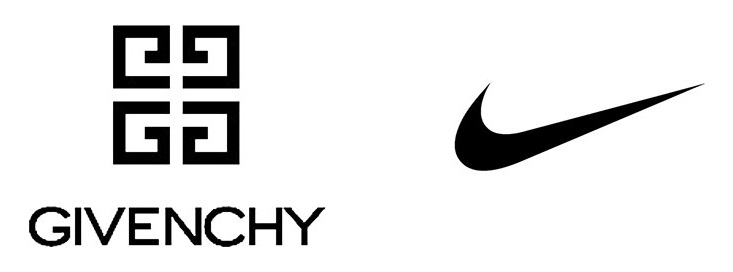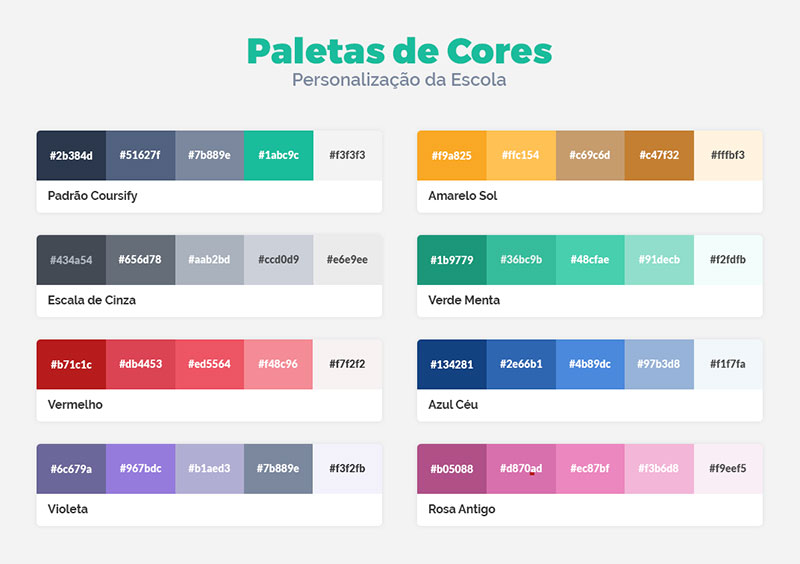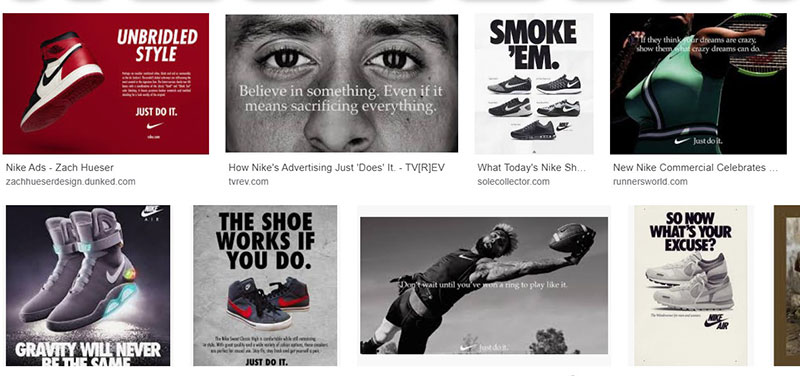Step by Step to Create a Visual Identity to Your Brand
What it means to create a visual identity? Is it choosing a name? Draw a logo? Set a color palette? Well, all of that and more.

Create a visual identity for a brand: what is it?
Branding professional Marty Neumeier defines a brand identity as “the outward expression of a brand, including its trademark, name, communication and visual appearance.”
Generally speaking, a brand identity is a way for a company to communicate with the world, differentiate itself from the competition, and create an experience that encourages people to engage with it.
So, it’s essential for any business that wants to excel in its industry to develop a strong branding foundation.
Some companies have managed to create a visual identity so well thought that have become a striking artistic expression, such as Apple and BMW, for example.
A brand identity is made up of what your brand says, what your values are, how you communicate your product / service, and what you want people to feel when they see or interact with you.
Essentially, your brand identity is the personality of your business and a promise to your customers.
With millions of companies trying to build a name and image in the marketplace, creating a strong visual identity has become crucial to differentiating themselves from the competition.
5 Steps to Create a Visual Identity to Your Brand
The terms “brand” and “logo” are often used interchangeably, but while a logo may be the symbol of a business, it is not the entirety of a brand.
It’s commonly the first thing people recognize about a company. However, an appealing logo may be unable to capture the target market’s attention without a well-established brand identity. In fact, creating a logo is just a small step towards developing a strong brand.
To create a consistent and effective visual identity to your brand, here’s a simple step-by-step:
1. Know your business, audience and competition
Just as when starting a business, the first step to create a visual identity is to do market research.
You need to define 3 factors:
- Audience: Know what your audience wants and expects in the type of product / service you offer is vital to create a visual identity that people will love. It’s also helpful to learn about the common trends popular among them so you can offer something that would catch their attention.
- Competition and value proposition: What makes your company unique in your segment define the difference between you and your competition. Reference is essential for the development of a successful brand. Looking at other examples of branding that worked or failed will also help you make more assertive decisions.
- Personality: To stand out from the crowd, your brand needs personality. To create a visual identity for your business, you’ll use colors, types, and images, but beyond that, this visual representation needs to communicate who your company is. For example, is your business as dynamic and bold as Nike? Or elegant and professional, like Givenchy? You can develop a unique character for your brand to connect with your target audience. It would also help you conduct campaigns and brand marketing strategies in the future if your brand has a personality.

2. Create a logo
Once you know your business inside and out, it’s time to bring your brand to life.
In the words of graphic designer Paul Rand, “design is the silent ambassador of your brand.”
– Design Tips for Creating Professional Presentations
While the logo is not the full brand identity, it is a vital element as it will be the easiest part to remember and therefore most recognizable to the public.
The process of creating your company logo comprises the various factors that are listed below.
Logo
The logo is a visual representation, made up of symbols and words.
To create a distinctive design to symbolize your brand, the best option is to hire a designer and give a detailed briefing of what you want.
This way, you can elaborate on which elements and style you want to include in your company emblem.
There is no ready recipe for creating a logo, each designer has his own method, but to help you and him/her, scribble what you have in mind on paper, it makes things a lot easier.
In general, keep your design simple, without many elements that can cause visual confusion, so that it can be easily identifiable.

Colors
Once you have solid visual images, you can explore colors.
The colors you choose should support the personality you want your brand to have. You can take advantage of color psychology to attract people’s attention and send the right message.
Think of the emotions that best align with this personality, they are not universal, each individual thinks of colors a little differently, but in general, the emotions associated with colors are these:
- Orange: enthusiasm, change, expansion and dynamism
- Green: freshness, balance and harmony
- Blue: power, safety, confidence
- Red: action, urgency, agility
- Yellow: happiness, sympathy, animation
- Pink: romance, docility, innocence
- Purple: luxury, mystery, beauty
- Gray: conservative, modern, formal, solid
- White: brightness, cleanliness and tranquility
- Black: strength, formality and elegance
Answering which of these features best matches the personality and purpose of your brand will help you define a key color to create a visual identity for your logo.
You can then play with different shades and color finishes when designing your logo. For instance, you can use a matte tone to showcase sophistication or opt for a gloss finish to showcase a dynamic brand personality.
But you don’t have to choose just one option. Creating a color palette is a way to enrich and enhance your identity.
It offers variety so you can develop unique designs for your business while staying true to brand identity.
There are some great sites that can help you set a color palette for your business.
– Design and video editing tips
A good color palette is clean and flexible, providing designers enough options to be creative, but not enough to overwhelm the viewer. It can include:
- 1 main color
- 2 primary colors
- 3-5 complementary colors
Take a look at the color palette that Coursify.me uses and makes available to assist its customers:

Typography
Typography can also be a double-edged sword if not used properly. Creating a visual identity for your business means creating a pattern, and for that there cannot be dozens of fonts being used.
In your logo, on the website and in all documents created by your company (print and digital), there should be consistent use of typography.
If you take a look at the Nike site and ads, you will easily notice that they use the same set of fonts in all their materials, which helps to create a concise brand image.

Therefore, choose the font you will use for your logo carefully so that it matches your company message.
You should choose or even create a font that reflects your identity and is both readable and unique to ensure your materials won’t confuse your audience.
If you have a brick company, for example, choose a sturdy and robust font. If you sell online craft courses, a more delicate or rustic handwriting may be a better option.
Although you will probably only use one type of font in your logo, there are many other texts that your company will need to create, which means you don’t always (and shouldn’t) use the same font.
Select two or three different types to create your communication, but be careful that they are well readable. Do tests on different applications if necessary. For instance, when creating materials like posters, you can check if your font is clear regardless of the text size.
3. Document your brand visual identity
There are a number of ways and channels a company uses to communicate with the public.
When you advertise your online course, for example, you will likely send emails, create Google ads, create informative banners that can be online or print, and perhaps even distribute business cards to potential customers.
Whatever it is, the creation of models (even details such as email signatures) will provide your company a more unified, reliable and professional appearance.
Hence, it’s ideal to align your materials and brief your team members on your brand identity. This way, everything you release that carries your company’s name will appear uniform and on brand.
Consistency is what can create or break a brand identity.
So, make use of the design options you have chosen for your brand in all areas of your business. Whether it is a process flow diagram to be used in presentations or a marketing collateral, make sure everything you create aligns with your brand identity.
This standardization is the only way to create a visual identity solid and striking.
To ensure that your business adheres to brand “rules,” develop a set of guidelines, also called a brand style guide.
This way, any employee or partner who uses your brand can keep it within the correct standards, preserving your image.
4. Make a final analysis
Finally, before you aprove your brand’s final identity, make sure it is:
- Distinguished: stands out among competitors and catches the attention of your audience.
- Attractive: causes visual impact.
- Scalable and flexible: can grow and evolve with the company.
- Cohesive: each part complements the brand identity.
- Easy to apply: can be used on different materials without impairing its readability.
5. Monitor your brand
Similar to other aspects of your marketing, it’s hard to know what you’re doing right (and what isn’t) without applying performance indicators and closely tracking your results.
– Performance metrics for online business training
Use Google Analytics, surveys, comments, social media discussions, and more to track your brand and get an idea of what people think and talk about you.
This will give you the opportunity to implement changes as needed, either to correct an error or to improve your identity.
Yes, consistency is crucial, but staying flexible in a society that is always looking for the next best thing is just as important.
Flexibility allows adjustments to advertising campaigns, slogans, and even a few tweaks to your overall brand identity, so you can continually keep your audience interested.
To create a visual identity memorable for your brand requires consistent use of logo, colors and fonts, but it’s worth it.
When consumers instantly recognize who you are and what you represent based on a brand, you become more than just a name and a symbol.
Create a visual identity for online courses

With all this information, you are ready to create a visual identity attractive and potential conversion high.
Digital businesses, like online courses, benefit greatly when they have a well-built and strong brand.
Investing in creating a visual identity for your online school not only gives your business a more professional look, but allows your students to easily identify you.
Brand created and course ready, time to host it in an easily customizable Learning Management System such as Coursify.me.
– Whats is a Learning Management System
Complete eLearning platform, Coursify.me is the ideal solution for anyone who wants to create, sell and promote courses on the internet.
Serving businesses and professionals in more than 60 countries, the platform offers a variety of customization options so you can create a virtual school with your “look”.
We have three plan options for you to decide which one best suits your needs.
Visit our website, test the platform and start creating and selling quality online courses right now.

